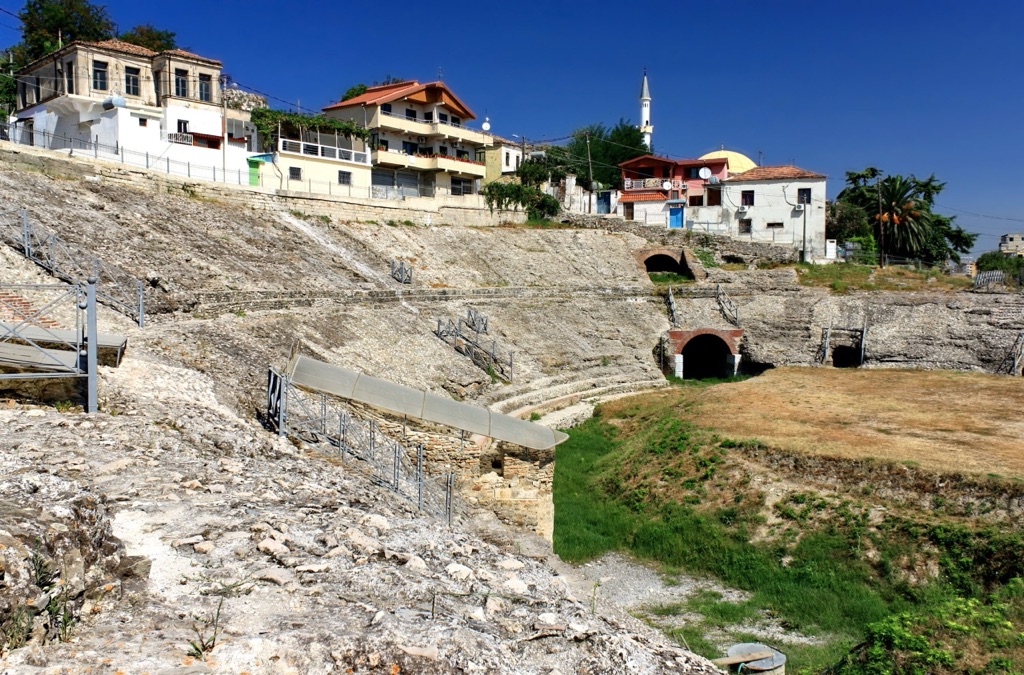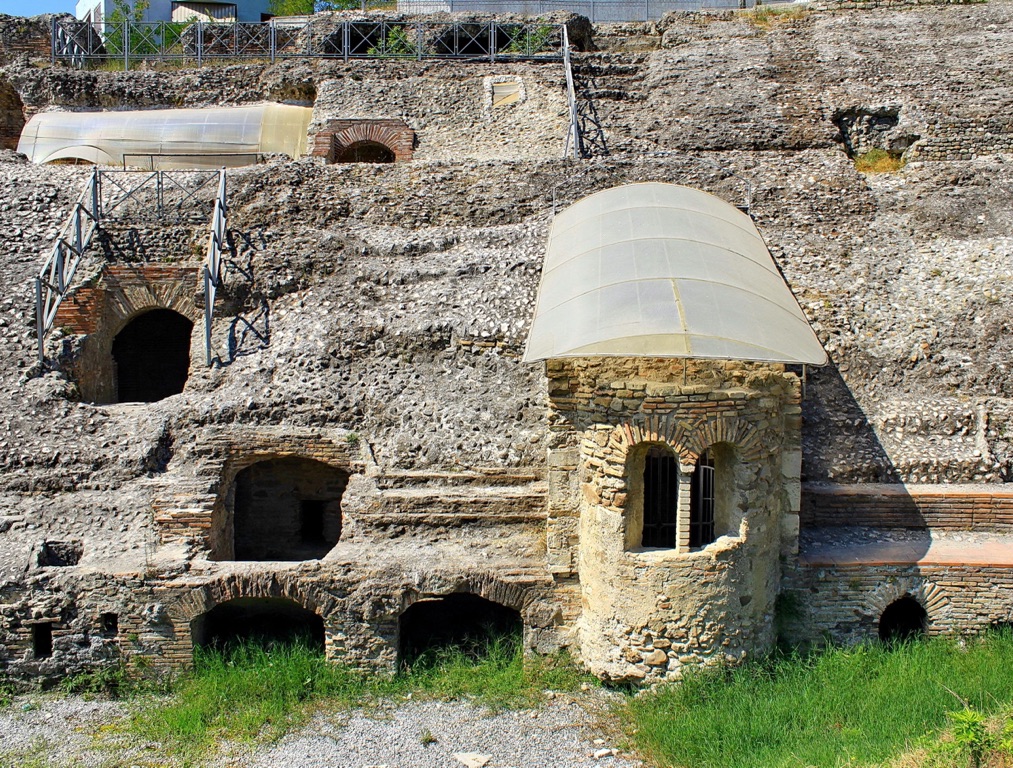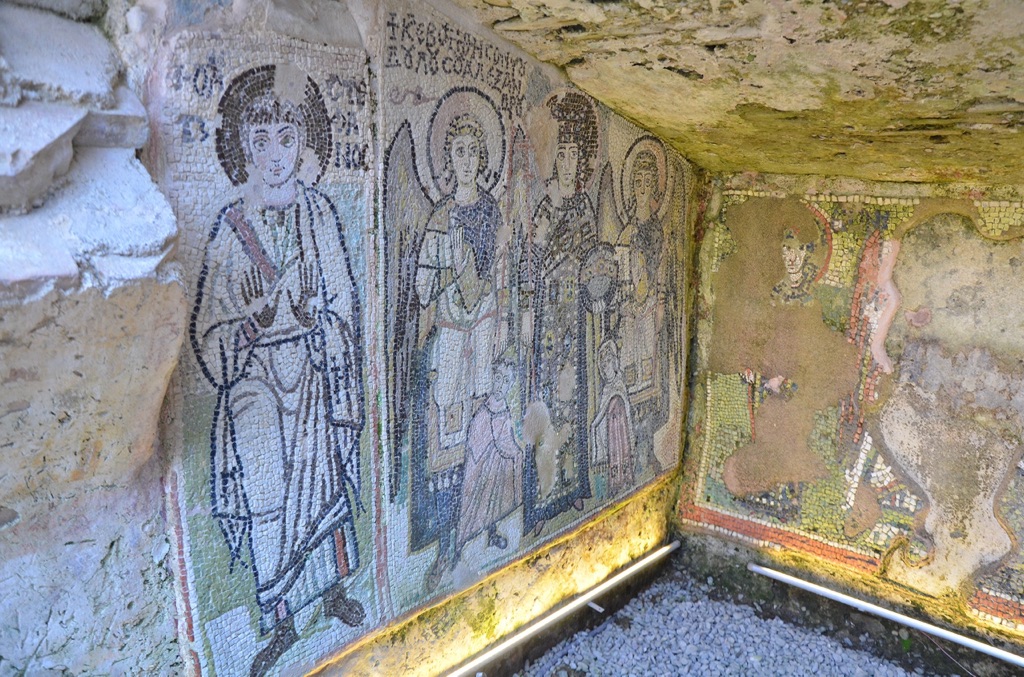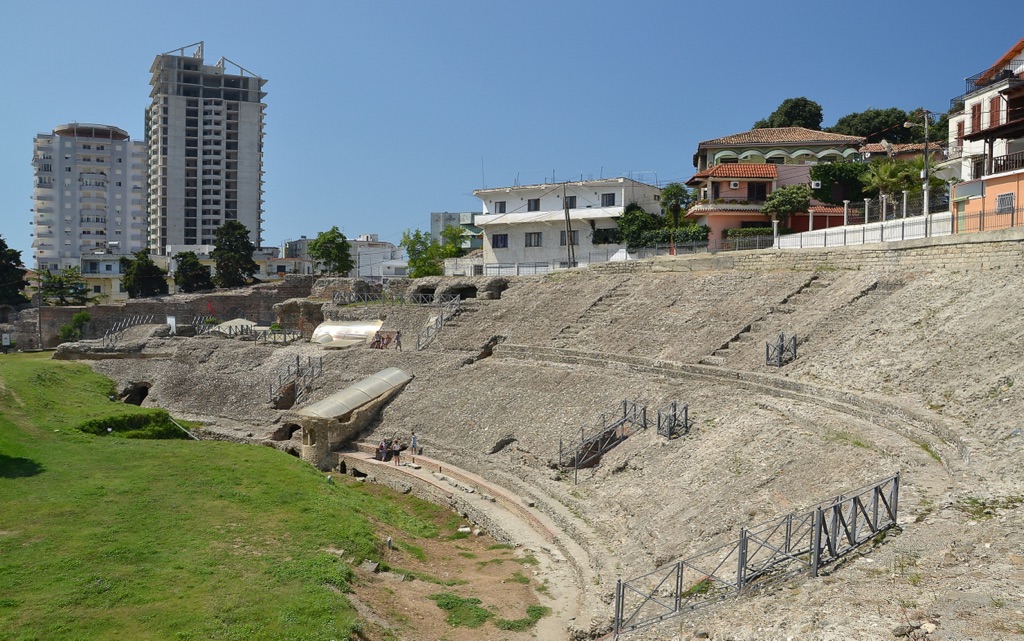The Amphitheatre of Durrës, nestled in the coastal city of Durrës, Albania, stands as a monumental relic of the Roman Empire. Constructed in the 2nd century AD, it is one of the Balkans’ largest amphitheatres. Once capable of seating up to 20,000 spectators, this historical edifice showcases the grandeur of ancient Roman architecture and the cultural significance of public spectacles in Roman society. Over the centuries, the amphitheatre has witnessed various transformations, including its use as a fortress during the Byzantine era and later as a residential quarter. Today, it is a poignant symbol of Albania’s rich archaeological heritage and a testament to the enduring legacy of Roman engineering.
Get your dose of History via Email
Historical Background of the Amphitheatre of Durrës
The Amphitheatre of Durrës was unearthed in 1966 by a group of Albanian archaeologists. This discovery brought to light a significant Roman structure that had been buried for centuries. Built during the reign of Emperor Trajan, the amphitheatre served as a venue for gladiatorial games and public spectacles. Its construction reflects the Roman Empire’s expansion into the region and the cultural assimilation that followed.

Throughout its history, the amphitheatre has seen various uses. In the Byzantine era, it was repurposed as a fortress. During the Ottoman occupation, the site became a residential area, with houses built within its structure. This layering of historical phases adds to the complexity and richness of the site’s narrative.
The amphitheatre’s historical importance is multifaceted. It not only served as a hub for entertainment but also played a role in the social and political life of Durrës. The structure has been the backdrop for significant historical events, including the spread of Christianity. A chapel with a mosaic floor, dating back to the 4th century AD, was discovered within the amphitheatre, indicating its use as a place of worship.
Despite its significance, the amphitheatre has faced challenges, including threats from urban development and the need for conservation. Efforts to preserve the site have been ongoing, with various international organizations contributing to its restoration and protection.
The Amphitheatre of Durrës is not just an archaeological treasure but also a cultural beacon. It continues to attract scholars, tourists, and history enthusiasts, eager to glimpse into the past and the monumental achievements of Roman architecture and urban planning.

About the Amphitheatre of Durrës
The Amphitheatre of Durrës, with its elliptical shape, is a marvel of ancient engineering. Its construction utilized local limestone, and the design included vaulted corridors and tiered seating, typical of Roman amphitheatres. The structure’s size and capacity reflect its importance in the region, accommodating a significant portion of the city’s population during events.
Architectural highlights of the amphitheatre include the remnants of a two-story stage building, an orchestra pit, and a complex system of underground passages. These passages were used by gladiators and animals before their appearance in the arena. The presence of these features underscores the amphitheatre’s role in providing entertainment that was both grand and meticulously organized.
The building materials have withstood the test of time, though the structure has suffered from neglect and environmental factors. Conservation efforts focus on stabilizing the ruins and preventing further deterioration. The amphitheatre’s architecture not only serves as a historical record but also provides insights into the technological capabilities of the time.

One of the most striking features discovered at the site is a series of wall paintings, which offer a glimpse into the artistic expressions of the period. These frescoes depict mythological scenes and figures, adding an aesthetic dimension to the amphitheatre’s historical narrative.
The Amphitheatre of Durrës remains a significant study subject for historians and archaeologists. Its construction methods and architectural features continue to inform our understanding of Roman building techniques and their adaptation in different provinces of the empire.
Theories and Interpretations
The Amphitheatre of Durrës has been the subject of various theories and interpretations. Its use as a venue for gladiatorial games is well-documented, but the full extent of its significance in Roman society is still explored. The discovery of the chapel suggests that the amphitheatre may have played a role in the early spread of Christianity in the region.
Some mysteries surround the amphitheatre, such as the full extent of its original structure and the details of its conversion over time. Theories about its design and construction are based on comparisons with other Roman amphitheatres, but the unique aspects of the Durrës site require careful interpretation.

Historical records and archaeological findings have been matched to piece together the amphitheatre’s past. However, gaps in the historical record leave room for speculation and further research. The presence of residential structures from later periods adds complexity to the site’s history.
Dating of the amphitheatre has been carried out using various methods, including stratigraphy and analysis of construction materials. These studies have helped establish a timeline for the amphitheatre’s construction and subsequent modifications.
The interpretations of the Amphitheatre of Durrës continue to evolve as new discoveries are made. Each layer of its history provides a deeper understanding of the cultural and historical context in which it existed.
At a glance
Country: Albania
Civilization: Roman Empire
Age: 2nd century AD
Conclusion and Sources
Reputable sources used in the creation of this article include:

